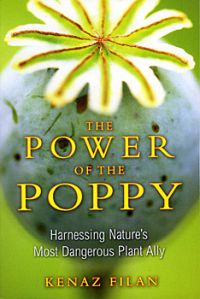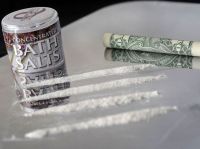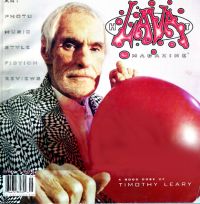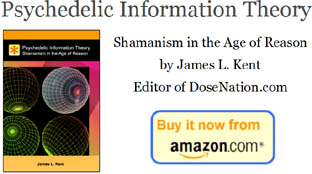Alex Jones turns the crazy up to 23. Words cannot express how weird this is. Seriously. Viewer discretion advised?
After a lengthy debate, the state House of Representatives today gave final legislative approval to a bill that decriminalizes the possession of small amounts of marijuana.
The vote was 90 to 57 in favor and came after a spirited discussion that stretched on for nearly five hours.
The bill now goes to Gov. Dannel P. Malloy, who immediately hailed its passage and pledged to sign it when it reaches his desk.
"Final approval of this legislation accepts the reality that the current law does more harm than good - both in the impact it has on people's lives and the burden it places on police, prosecutors and probation officers of the criminal justice system,'' Malloy said in a statement emailed to reporters moments after the vote was tallied.
In case you were worried that your life wasn't pathetic or miserable enough, here's a heartwarming story out of Russia in which junkies who can't afford heroin are resorting to a completely toxic option called "krokodil" that is literally dissolving their skin down to the bone:
The home-made drug that Oleg and Sasha inject is known as krokodil, or "crocodile". It is desomorphine, a synthetic opiate many times more powerful than heroin that is created from a complex chain of mixing and chemical reactions, which the addicts perform from memory several times a day. While heroin costs from UK20 to UK60 per dose, desomorphine can be "cooked" from codeine-based headache pills that cost UK2 per pack, and other household ingredients available cheaply from the markets.
It is a drug for the poor, and its effects are horrific. It was given its reptilian name because its poisonous ingredients quickly turn the skin scaly. Worse follows. Oleg and Sasha have not been using for long, but Oleg has rotting sores on the back of his neck.
"If you miss the vein, that's an abscess straight away," says Sasha. Essentially, they are injecting poison directly into their flesh. One of their friends, in a neighbouring apartment block, is further down the line.
"She won't go to hospital, she just keeps injecting. Her flesh is falling off and she can hardly move anymore," says Sasha. Photographs of late-stage krokodil addicts are disturbing in the extreme. Flesh goes grey and peels away to leave bones exposed. People literally rot to death.
Good times. [Thanks, Sam Hell!]
An old post on the blog Science That Matters reminds us of a late 1970s study:
Thousands of studies have been done claiming that addiction is a disease, mostly by putting rats in a cage with some drugs and noting that they’ll repeatedly take the drugs, even if it means starving to death.
Bruce Alexander was skeptical about these results. He noticed that the rats in the experiments were stuffed alone in a boring cage with little else to do. “If I was strapped down alone in a cage,” he thought, “I’d probably want to get high too.”
So he built a rat park — a large, intricate, brightly-painted and heavily-padded structure to make the rats actually happy. He put half the rats in the normal cages and half in the park and gave both equal access to drugs.
The rats in the cage got addicted, while the rats in the park stayed away.
Then, even more strikingly, he took rats who’d had 57 days to get addicted to the drugs and took half of them out of the cages and put them in the park. The rats, even though they’d been addicted in the cage, suddenly stayed away from the drugs. They even voluntarily detoxed — trembling and shaking, but still staying off the drugs.
The study in question was essentially buried and defunded, but it does beg the question - for those drug users under the sway of addiction, how much of their lives resembles a cage with no diversion as opposed to resembling the rat park that Alexander created?
 |
The opium poppy – Papaver somniferum – is believed to be descended from the wild poppy – Papaver setigerum – which originally came from the Western Mediterranean. The poppy began to be cultivated agriculturally about 7500 years ago. Filan cites an archaeological dig that took place at Raunds, in Northamptonshire, England, where eight poppy seeds were uncovered and dated between 5800-5600 years ago.
The reason for cultivation is proposed to be two-fold; firstly, medicinally and, secondly, for its psychoactive properties. At some point the poppy lost its ability to self-seed and, in times of famine, was deemed not to be a useful crop. According to Filan, the poppy needed to find another use. It “had to adapt itself to meet other needs. And one of humankind’s strongest drives – stronger, in many cases than the instincts for procreation, security, or even self-preservation – is the urge to seek pleasure” (Filan 15). In the poppy’s psychoactive properties, humanity found a new role for the plant.
Anyone interested in starting a company? Organic chemist looking for ambitious biochemist and molecular geneticist.
What was the most valuable compound they could make with the toolkit of synthetic biology? Some research came up with a few candidates including a few very sophisticated cancer drugs. But another compound was up there in monetary terms: LSD. The value by weight was astronomical.
Wintermute and his colleagues had a good laugh about that. But the more they looked into it, the more interesting - and viable - the drug looked. Around 20 tonnes of lysergic acid, a precursor of LSD, are made each year and turned into real medicines, such as nicergoline, a treatment for dementia. The drug is purified from big vats of fungus (which make the compound naturally) using technology developed decades ago.
With the tools of synthetic biology, Wintermute thought they might do better. The ergot fungus takes lysergic acid and turns it into a huge variety of exotic molecules. They could mix and match biological pathways from different species of ergot fungus and make potentially new drug molecules. They might even come up with a next generation dementia drug.
Wintermute gave an update on the project last week at the Synthetic Biology 5 conference at Stanford University. As yet he is not making any lysergic acid, but he has dropped two of the six required biological pathways into baker's yeast, which merrily churns out intermediate compounds. At a rough estimate, he expects a litre of modified yeast in broth will produce a gram of lysergic acid. Once made inside the yeast, the drug should pass through the cell walls, where it can be separated out and purified.
_84714_sm.jpg) |
An article from Nature linking ketamine's fast antidepressant action to BDNF and neural growth hit the media this week. One small dose of ketamine is enough to promote neurogenesis for an entire week. If you do any more than that side effects may include intermittent paranoid psychosis and catatonia.
A new study sheds light on why the anesthetic and "club drug" ketamine can relieve depression rapidly -- in hours, instead of weeks or months.
The new study found that just one dose of ketamine produced [an antidepressant] effect in a half an hour -- compared with the weeks or months this can take with standard antidepressants, in mice as well as in humans. Further, the new study found that the antidepressant effect of a single dose of ketamine lasted for a week.
The researchers, led by Lisa Monteggia, an associate professor of psychiatry at the University of Texas Southwestern Medical Center, also measured brain changes after animals underwent behavioral tests. Monteggia and her colleagues found that ketamine acted by increasing synthesis of BDNF, a nerve growth factor that supports the health of brain cells, helps them grow and can promote the development of new neurons.
Digging further, Monteggia's group found that ketamine increases BDNF by deactivating a chemical called eEF2 kinase (also known as CAMKIII), which normally suppresses BDNF production. Consequently, when eEF2 kinase is inactivated, brain cells produce more BDNF.
Which leads to the question, if a little BDNF is a good thing, is too much BDNF a bad thing?
 |
Business Week takes a look at the business of selling "incense" and "bath salts" - you know, for money:
While untracked in the U.S. until a few years ago, the market for the kind of "incense" sold by Upchurch now generates close to $5 billion annually, according to Rick Broider, president of the North American Herbal Incense Trade Assn. (Nahita), which represents more than 650 manufacturers, wholesalers, and retailers. (Broider says his number is based on self-reported sales statistics from members.) Daniel Francis, executive director of the Retail Compliance Assn., another trade organization, founded to help inform and protect the rights of merchants, says he hired an independent analyst who came up with a similar figure.
Following this to its already foregone conclusion, the article notes:
Society may just be beginning to understand the implications of a developing class of drugs that deliver highs like the organic product without the hassle of farming, that can be transported in small bricks and not bales, that dogs can't or don't yet know how to smell, and that leave no trace on drug tests. There is every indication that synthetic replicas of farmed drugs, legal or not, have arrived for good. As Collier puts it, "the race is on."
Rusty Payne, a spokesman for the DEA, agrees that outlawing substances doesn't mean they will disappear. Banned blends might return to shelves or be sold underground. "A logical assumption is that the bad guys see this as a good market," he says of the synthetics. "If the way they can make the most money is smuggling drugs, there's going to be smuggling drugs."
It's just that simple, ladies and gentlemen! Cute how the article considers these "synthetic highs" as opposed to the apparently all natural highs of such greatest hits as LSD and MDMA, but you get the point - "the bad guys" are on the prowl.
[Thanks, Sam Hell!]
 |
On June 16, 2011 the New York Public Library announced that it has acquired the Timothy Leary archive for $900,000. The well organized, invaluable collection contains >335 well organized boxes equivalent to 412 linear feet of letters, manuscripts, research documents, notes, legal and financial records, printed materials, photographs, video and audio tapes, CDs and DVDs, posters and flyers, and artifacts, dating from Leary’s youth in the 1920s until his death in 1996.
Leary kept meticulous records at many points during his life. There are comprehensive research files, legal briefs, budgets and memos about the many institutes and organizations he founded, but there are also notes and documents from when he was on the run after escaping from a California prison with help from the Weather Underground. A folder labeled as notes from his “C.I.A. kidnapping” in 1973 is full of cryptic jottings recounting the details of his arrest in Afghanistan, at an airport in Kabul, after he fled the United States.
 |
Straight from Jimmy's mouth in a NY Times oped:
IN an extraordinary new initiative announced earlier this month, the Global Commission on Drug Policy has made some courageous and profoundly important recommendations in a report on how to bring more effective control over the illicit drug trade. The commission includes the former presidents or prime ministers of five countries, a former secretary general of the United Nations, human rights leaders, and business and government leaders, including Richard Branson, George P. Shultz and Paul A. Volcker.
The report describes the total failure of the present global antidrug effort, and in particular America’s “war on drugs,” which was declared 40 years ago today. It notes that the global consumption of opiates has increased 34.5 percent, cocaine 27 percent and cannabis 8.5 percent from 1998 to 2008. Its primary recommendations are to substitute treatment for imprisonment for people who use drugs but do no harm to others, and to concentrate more coordinated international effort on combating violent criminal organizations rather than nonviolent, low-level offenders.
These recommendations are compatible with United States drug policy from three decades ago. In a message to Congress in 1977, I said the country should decriminalize the possession of less than an ounce of marijuana, with a full program of treatment for addicts. I also cautioned against filling our prisons with young people who were no threat to society, and summarized by saying: “Penalties against possession of a drug should not be more damaging to an individual than the use of the drug itself.”
|

Recently @ DoseNation
|
|




_84714_sm.jpg)










